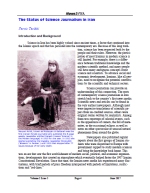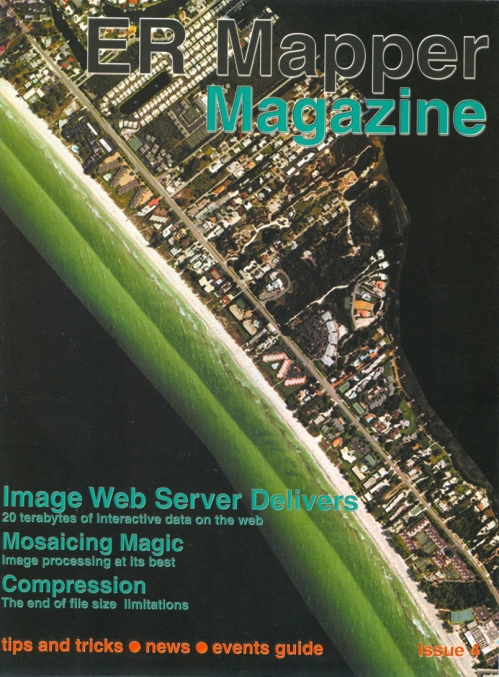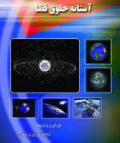Applications of Remote Sensing Data in Iran
March 2002
Presented to the 39th Meeting of the Scientific and Technical Subcommittee of COPUOS held in Vienna, Austria, 25 February- 5 March 2002, and contained in the documents of COPUOS.
Applications of Remote Sensing data in Iran
Parviz Tarikhi
Iranian Remote Sensing Center (IRSC)
No. 22, 14th Street, Saadat Abad, Tehran 19979, Iran
Tel: +98 21 2063207, Fax: +98 21 2064474,
E-mail: ptarikhi@iran-irsc.com
Remote Sensing data as the efficient and modern tool for studying and monitoring the environment and resources of the Islamic Republic of Iran (I. R. Iran) has been used since the early days when these data made available commercially. Landsat data was the first which applied by the users, and this followed by the usage of the new generation satellite data acquired from SPOT, IRS, Radarsat and so on. Presently the data acquired from different commercial Remote Sensing satellites is widely used by the variety of organizations and institutions in I. R. Iran for research and development programs. The Iranian Remote Sensing Center (IRSC) as the only legal governmental body for providing Remote Sensing data for all of the users throughout the country is the earliest organization involved in the application of earth space data with about 25 years of background. In addition to data providing, IRSC follows implementation of the different application development as well as research projects and programs requested by different organizations and institutes of the country. Furthermore, IRSC pursues the plans for research in the development of the Remote Sensing technology that currently focuses on the development of a charge coupled device (CCD) sensor.
On the application of Remote Sensing data, IRSC is widely involved in the implementation of different projects. In this presentation we give a description of the three application projects that are carried out in IRSC and clearly show the applicability and potential of the Remote Sensing data for sustainable development of the country. These projects are as follows:
1) DEM and DSM generation of Iran
2) Drought monitoring of Iran by remote sensing technology
3) Snow cover monitoring using NOAA-AVHRR data
(1) DEM and DSM generation of Iran
Digital Elevation Models (DEMs) and Digital Surface Models (DSMs) are considered as comprehensive and efficient tools for studies using geo-referenced data and information. There are some approaches for DEM and DSM generation. The conventional method applies optical satellite data and maps for DEM and DSM generation.
In a national project supported by the Radio-Communication Office of the Ministry of Post, Telegraph and Telephone, a team of specialists of the Iranian Remote Sensing Center commissioned to generate DEM and DSM of the whole country. Radio-Communication Office needs these DEMs and DSMs for its countrywide project to find and locate the convenient and suitable locations and sites for mounting telecommunication installations and antennas to provide a full coverage of the country for radio communications. The project aiming to set up a position based dataset for telecommunication link design comprised of 3 operational phases as follows.
I) DEM and DSM generation using either 1/25000-scale topographic maps or SPOT stereo pairs,
II) Providing clutter/land use- morphological maps using Landsat TM and ETM through interpretation method,
III) DEM generation of the whole country and 400 km beyond the borders by using the 1/250000 scale topographic maps.
Generating the mosaic of the 1/250000-scale maps of the whole country and the mosaic of the 1/25000 scale maps of the cities were the supplements to the project that was carried out successfully.
(2) Drought monitoring of Iran by remote sensing technology
Due to its negative impacts on the country’s economy, people’s life and relevant losses, droughts are considered as the natural disasters that strike the country and the neighboring regions frequently. Accordingly the planners and the authorities pay great attention to the studies leading to the promising results for mitigation or control of the disasters such as droughts. Due to its potentials and capabilities, remote sensing technique is one of the effective tools in drought studies. In this relation a team of specialists in the Iranian Remote Sensing Center (IRSC) has carried out a research program by investigating NOAA satellite capability in drought monitoring in Iran.
In this program, ten images acquired in a month were selected. Then the necessary pre-processing such as geometric corrections was applied. In the next phase a 10-day NDVI maximum value composite image for each month was produced while cloud effects has been efficiently removed by the applied techniques. Later twelve monthly NDVI images of each year were combined. The method was applied for 1998 (beginning of drought) to 2000. According to the findings of the program the annual NDVI decrement from 1998 to 1999 and from 1999 to 2000 is about 14% and 18%. Respectively.
The method is believed to comprise a basic component of the drought assessment model of the country that is going to be set up.
(3) Snow cover monitoring using NOAA-AVHRR data
Snow cover is a potential factor related to climate and global changes. Monitoring of snow cover and its accumulation throughout the country is of great importance in assessment of the water resources that plays a key role in the variety of the issues related to development of the country.
The snow cover information may be gathered through weather station observations that are limited point surface measurements. Alternatively, in order to monitor the snow cover regularly and in large areas, meteorological satellite data such as NOAA-AVHRR data may be used.
Since the major problem in snow cover monitoring applying satellite data is cloud contamination, we set up an efficient algorithm for discrimination of snow from cloud, and a combination of two methods was applied to this mean. The methods include (1) classification method using four visible, near infrared, mid infrared and thermal infrared channels of AVHRR data for areas with altitudes higher than 2000 meters above sea level, and (2) multi-spectral threshold test method which takes into account the spectral characteristics of snow based on its reflectivity, brightness temperature, NDVI, and brightness temperature difference.
___________________________________________________
Contact person for the DEM and DSM generation program:
Mrs. Maryam Soheili Majd
IRSC, No. 22, 14th Street
Saadat Abad, Tehran 19979, I. R. Iran
Fax: +98 21 2064474
E-mail: majd@iran-irsc.com
Contact persons for the drought monitoring program:
Dr. Abbas Alimohammadi
IRSC, No. 22, 14th Street
Saadat Abad, Tehran 19979, I. R. Iran
Fax: +98 21 2064474
E-mail: alimoh_a@net1cs.modares.ac.ir
Mr. Abdolreza Ansari
IRSC, No. 22, 14th Street
Saadat Abad, Tehran 19979, I. R. Iran
Fax: +98 21 2064474
E-mail: aansari@iran-irsc.com
Contact person for the snow cover monitoring program:
Dr. M. R. Saradjian
IRSC, No. 22, 14th Street
Saadat Abad, Tehran 19979, I. R. Iran
Fax: +98 21 2064474
E-mail: mrsaradj@ut.ac.ir
————————————————————————
Note: Apart from any fair dealing for the purposes of research or private study, or criticism or review, this publication may only be reproduced, stored or transmitted in any form or by any means with the prior permission in writing of the author.
————————————————————————————–
Dear visitor,
Thanks for visiting this page!
I would appreciate your comments and suggestions on the content and set-up.
Parviz Tarikhi


































































January 15, 2012 at 20:01
This is absolutely gold. I did not expect that I’d get so much out of reading your write up! You’ve just earned yourself a returning visitor
January 15, 2012 at 16:13
Just linked to you…
I found some good info here today….
December 27, 2011 at 12:10
That’s Right!…
This is a really good blog. Good work!…
December 5, 2011 at 23:05
I bookmarked it…
Without doubt I can say that this is at the top of my favourite web site list….
December 5, 2011 at 21:07
Something to count on…
I really like your thoughts, well done!…
December 4, 2011 at 16:04
Consider some changes…
Perhaps you could think about quality and quantity from time to time….
December 2, 2011 at 22:29
Websites we think you should visit…
[…]although websites we backlink to below are considerably not related to ours, we feel they are actually worth a go through, so have a look[…]……
December 2, 2011 at 16:49
Happy…
Am glad that I found this – thanks muchly….
December 2, 2011 at 12:19
Bro, bookmarked your website, It is extremely a good choice for my family
November 1, 2011 at 09:16
I really believe you are going to conduct superior sooner or later We delight in everything you could get added to my own ideas base.Appreciating enough time as well as you set into the web site as well as detailed information you are offering!